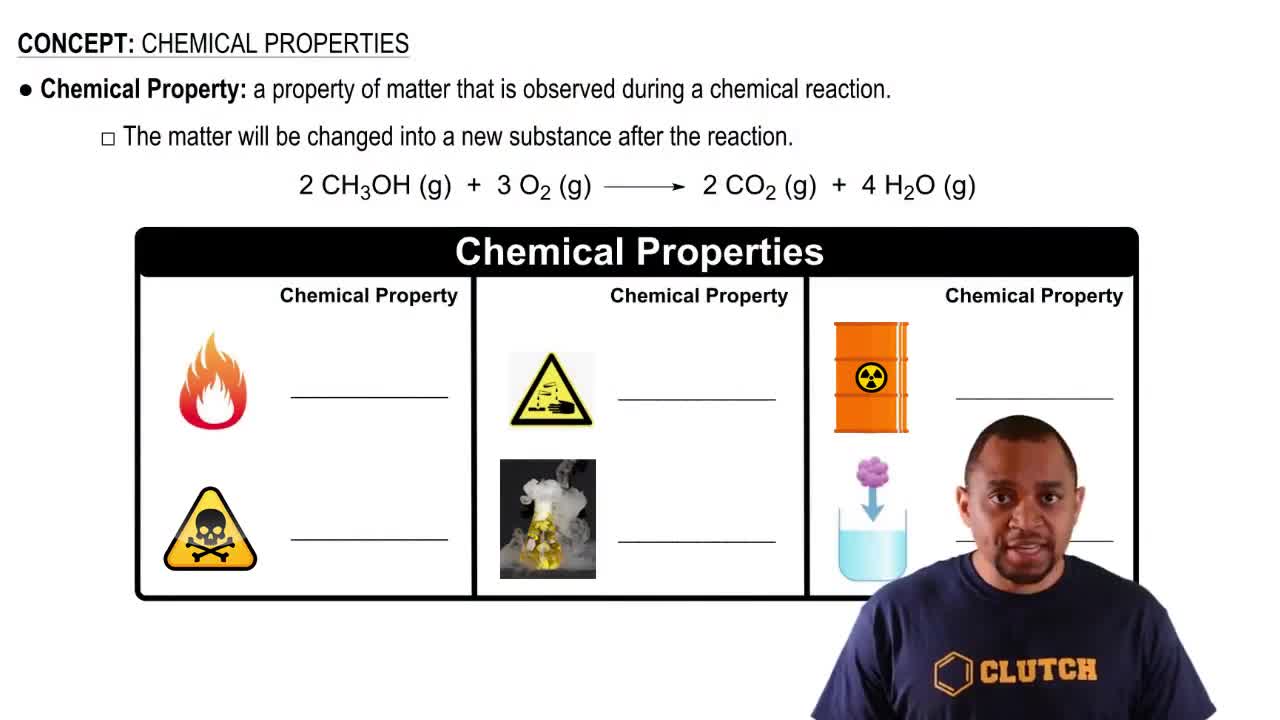Three binary compounds are represented on the following drawing: red with red, blue with blue, and green with green. Give a likely formula for each compound.
Ch.6 - Ionic Compounds: Periodic Trends and Bonding Theory
All textbooks McMurry 8th Edition
McMurry 8th Edition Ch.6 - Ionic Compounds: Periodic Trends and Bonding Theory
Ch.6 - Ionic Compounds: Periodic Trends and Bonding Theory Problem 37a
Problem 37a
 McMurry 8th Edition
McMurry 8th Edition Ch.6 - Ionic Compounds: Periodic Trends and Bonding Theory
Ch.6 - Ionic Compounds: Periodic Trends and Bonding Theory Problem 37a
Problem 37aChapter 6, Problem 37a
Label the following species as molecules or ions. (a) NO3-

Verified Solution
Video duration:
33sWas this helpful?
Key Concepts
Here are the essential concepts you must grasp in order to answer the question correctly.
Molecules
Molecules are neutral entities formed when two or more atoms bond together through covalent bonds. They can consist of the same or different elements and are characterized by their specific molecular formulas. For example, a water molecule (H2O) consists of two hydrogen atoms and one oxygen atom.
Recommended video:
Guided course

Heteronuclear Diatomic Molecules
Ions
Ions are charged species that result from the loss or gain of electrons by an atom or molecule. When an atom loses electrons, it becomes a positively charged cation, while gaining electrons results in a negatively charged anion. The nitrate ion (NO3-) is an example of a negatively charged ion, indicating it has gained an extra electron.
Recommended video:
Guided course

Ion Formation
Chemical Nomenclature
Chemical nomenclature is the systematic naming of chemical species based on established rules. It helps in identifying whether a species is a molecule or an ion, as well as its composition. For instance, the notation NO3- indicates that it is a nitrate ion, which is essential for classifying it correctly in the context of the question.
Recommended video:
Guided course

Chemical Properties
Related Practice
Textbook Question
499
views
Textbook Question
Given the following values for steps in the formation of CaO(s) from its elements, draw a Born–Haber cycle similar to that shown in Figure 6.7. Eea1 for O1g2 = -141 kJ/mol Eea2 for O1g2 = 745.1 kJ/mol Heat of sublimation for Ca1s2 = 178 kJ/mol Ei1 for Ca1g2 = 590 kJ/mol Ei1 for Ca1g2 = 1145 kJ/mol Bond dissociation energy for O21g2 = 498 kJ/mol Lattice energy for CaO1s2 = 3401 kJ/mol
559
views
Textbook Question
What is the difference between a molecule and an ion?
288
views
Textbook Question
Label the following species as molecules or ions. (c) NO2
337
views
Textbook Question
How many protons and electrons are in each of the following ions? (a) Be2+
1200
views
Textbook Question
How many protons and electrons are in each of the following ions? (b) Rb+
560
views